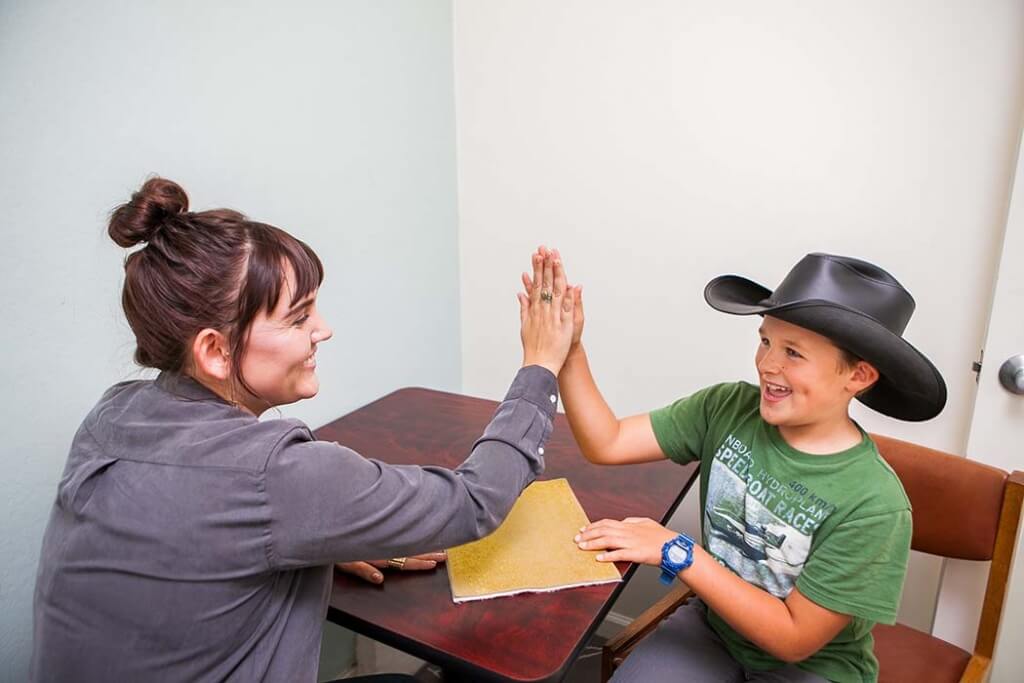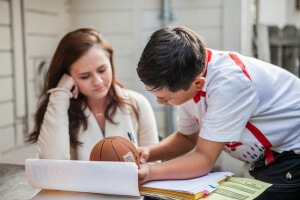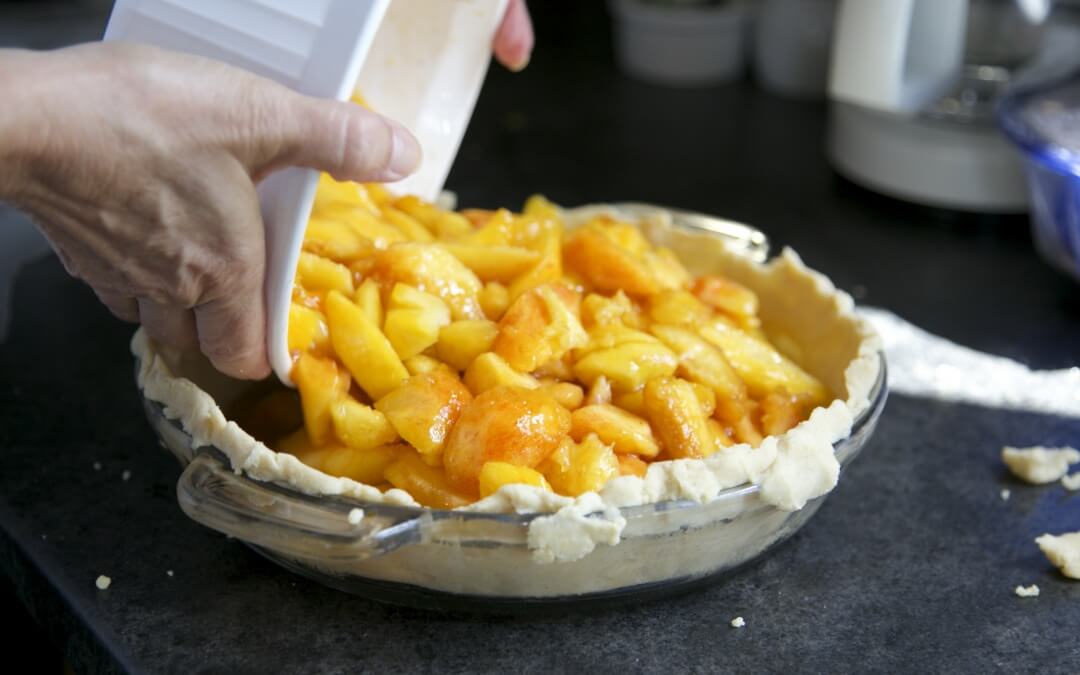Around the age of fifteen was when my sister and I had graduated into baking pies. She helped at first, showing us how she created her signature pinched crust that made each pie look like a big smiling sunflower. Shortly after that she’d call one of us in to “finish” her pie by having us crimp the edges for her and put it in the oven. I recall at one time requesting she make a certain pie I was craving, to which she suggested I learn how to do the whole process myself. She walked me through each step a couple times with feedback. Gradually she backed off and I was on my own.
Little did I know my Mom was utilizing a process for learning that leads to independence; or in this case, ultimately leads to a person who could probably make a pie in her sleep. The GRR Method, or ‘Gradual Release of Responsibility’ Model is a style of teaching in which the responsibility for learning is transferred from the teacher to the student (or baker).
In 1983 Pearson and Gallagher named the “Gradual Release of Responsibility” after the ideas in the 1970’s of the Russian educational theorist Lev Vygotsky. Pearson and Gallagher use a model of 4 general stages to guide learning toward independence and automaticity:

-
Teach using modeling and an explanation of the strategy
-
Guided practice where teachers gradually give more and more responsibility to the student for task completion
-
Independent practice accompanied by specific feedback
-
Application of the strategy in real life situations
Modeling and Explaining:
In relation to pie making, as a toddler I can recall grasping her skirt or apron while she rolled out the dough. Eating her delicacies and daily meals were as fundamental to my childhood as drinking water or breathing air. Watching her, and observing for years, started the modeling process. As I grew into my awareness I began asking questions about best practices such as preventing the dough from sticking to the rolling pin or the benefits of using butter versus shortening in a crust.
Guided Practice:
When she started the guided practice by having me finish her pie crusts with her assistance, she could explain and fix a disaster if I rolled too thin or ran out of pie dough. There was then a graduation to me checking in with her after each step of the process while doing it on my own. She taste tested the fruit to sugar ratios by asking open-ended questions like, “How do we balance something if it’s too sweet? What do we add?” Once she saved me from baking a salty cherry pie because I had mixed up the salt from the granulated sugar when preparing the fruit.
Independent Practice:
The day my pie was done with no assistance from her was memorable. When we served it, I remember looking at the faces of the ‘desserters’ at the table to gauge the pie’s success rather than eating it immediately myself. The feeling of home I felt when eating my mother’s pie was something I had begun developing for myself, with the twist of my own experiences in life. Making pie was becoming a practice in establishing where my roots were.
Application:
Not only do I now make my own variation of her pies, but I was able to adopt her ‘recipes are for suckers’ attitude by being able to improvise her pies and other recipes I had made time and time again. Now I realize the gift of a pie, with a homemade crust and fresh seasonal fruit, is the best way to tell the ones you love that they matter. It tells them that the smiles on their faces were worth the couple hours it took to make it.

This teaching model has been proven to be effective at all levels of learning. Although, many educators now see an initial step of establishing prior knowledge as an ideal precursor to the model. In my example, prior knowledge was established in all the moments she opened that worn oven door to pull out the peach pies in the summer, the pumpkin pies around the holidays and the first blackberries from the neighbor’s patch in the late spring. She would sometimes grumble as she bit into the first bite of her slice saying, “This could use a bit more sugar and a touch more vanilla,” illustrating how much she used her taste buds, not a recipe, to create her masterpieces.
“In a culture of swift fixes and low attention spans we need to teach people how to learn by creating systems designed for engaged learning“
Teachers have a much more limited time frame to achieve mastery of a given skill or standard than the years in my Mother’s kitchen. This four-step process is a skill we need to install and develop in every teacher so that they can teach this way (even in their sleep). If we are teaching concepts just to check a box that it was done but the students have not yet internalized the learning, or had enough time to make it an automatic application in their mental ‘tool-box’, have we done our jobs? When curriculum like math, science and history require students to work on a trajectory that builds off one idea to transition into the next. We have to teach toward true independence or we’ll lose students’ motivation and interest, and getting them caught up later is a well documented uphill battle.
 In a culture of swift fixes and low attention spans we need to teach people how to learn by creating systems designed for engaged learning while addressing the short term goal of teaching a necessary concept. In regard to education, the leading nations in the world typically integrate a longer process in teaching that not only teaches a skill, but a process of learning that can be replicated for any subject, for any learner, in a variety of realistic situations. This almost always includes the learner teaching or presenting to others about what they discovered as a final step in some form, which essentially adds an additional step to the GRR model. The more we can adopt, embrace and improve upon these practices, the more effective our teaching is.
In a culture of swift fixes and low attention spans we need to teach people how to learn by creating systems designed for engaged learning while addressing the short term goal of teaching a necessary concept. In regard to education, the leading nations in the world typically integrate a longer process in teaching that not only teaches a skill, but a process of learning that can be replicated for any subject, for any learner, in a variety of realistic situations. This almost always includes the learner teaching or presenting to others about what they discovered as a final step in some form, which essentially adds an additional step to the GRR model. The more we can adopt, embrace and improve upon these practices, the more effective our teaching is.
And we need more pie in the world. Always more pie.
At the Literacy and Language Center Inc. we work with students using a student-centered approach and positive language reinforcement that augments our multisensory programs. We create a customized program for each student to meet their unique needs in addition to addressing academic weaknesses while honoring the student’s strengths. Give us a call at 415-242-1205 if you’d like to know more about our services.



Recent Comments